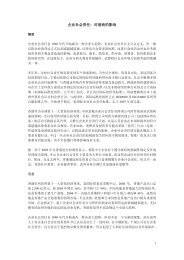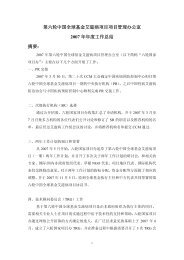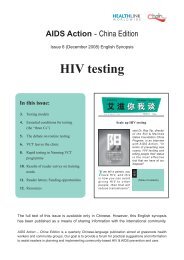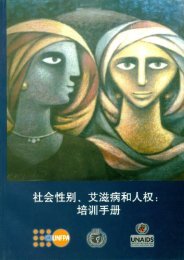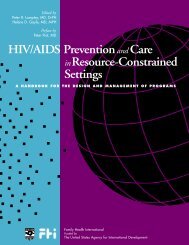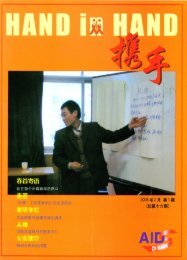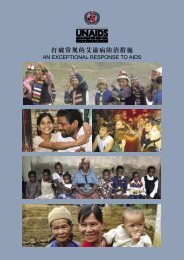The Training of Trainers Manual - UNFPA
The Training of Trainers Manual - UNFPA
The Training of Trainers Manual - UNFPA
Create successful ePaper yourself
Turn your PDF publications into a flip-book with our unique Google optimized e-Paper software.
Day 4<br />
Demonstrate how they should stand. Carefully check and monitor the circle as<br />
much as possible.<br />
Explain that the person in the centre must remain standing as stiff as a board the<br />
whole time, with their arms crossed at chest level and hands under the armpits.<br />
When she or he is ready to begin, she or he should say, ‘Ready to fall.’ <strong>The</strong> circle<br />
should reply, ‘Ready to catch.’ <strong>The</strong> person then says, ‘I’m falling,’ and the circle<br />
responds, ‘Fall away.’<br />
As the ‘willow’ falls out towards the circle, make sure he or she remains stiff and<br />
doesn’t bend at the waist. <strong>The</strong> participants support the ‘willow’ and slowly move<br />
him or her around, back and forth. Invite people in the circle to make very s<strong>of</strong>t<br />
blowing sounds, passing air between their lips to sound like a gentle wind.<br />
Closure<br />
After the ‘willow’ has been moved around in the ‘wind’ for a couple <strong>of</strong> minutes,<br />
ask the group to help the person stand upright. Ask another participant to<br />
volunteer to stand in the centre.<br />
Discuss with the participants what they felt during this exercise.<br />
<strong>Training</strong> topic<br />
Working with especially vulnerable youth<br />
Objectives <strong>of</strong> the session<br />
To help participants understand how stigma, discrimination, and other risk factors<br />
increase young people’s vulnerability and to suggest effective ways to work with<br />
especially vulnerable youth.<br />
Exercise: Power walk<br />
Objectives<br />
To raise awareness about the inequality <strong>of</strong> opportunities in society<br />
To foster an understanding <strong>of</strong> possible personal consequences <strong>of</strong><br />
belonging to certain social minorities or cultural groups<br />
40-50<br />
minutes<br />
To help participants identify vulnerable and marginalised groups<br />
To promote empathy with those who are different from oneself<br />
Section 2. Guidelines for <strong>Training</strong> <strong>of</strong> <strong>Trainers</strong><br />
85




